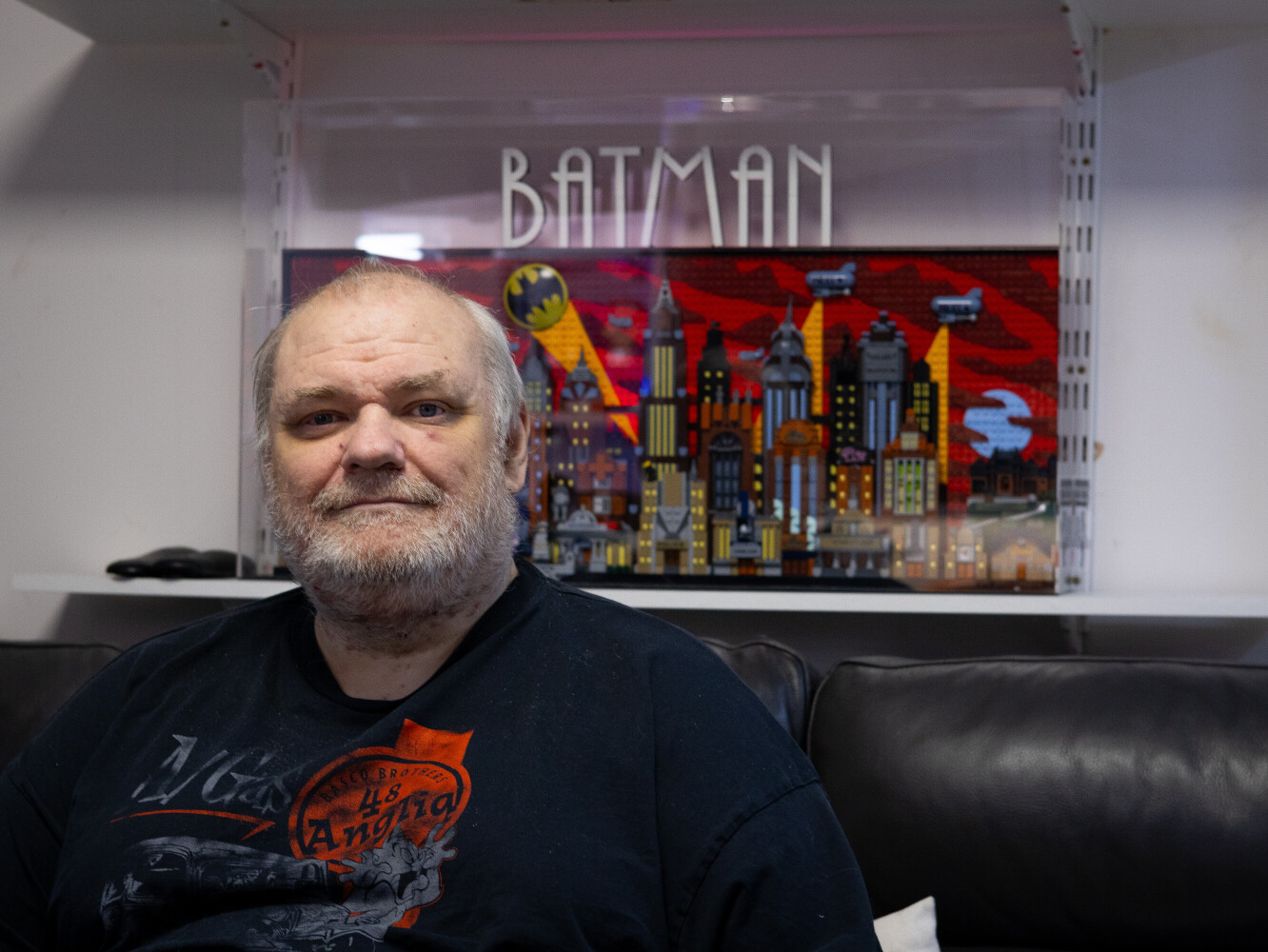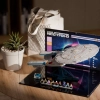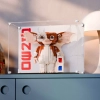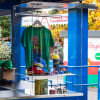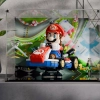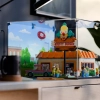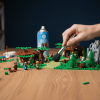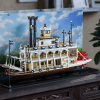Q&A with David Willoughby
David Willoughby is a highly respected figure in the MOC community, renowned for his innovative approach to custom LEGO builds. With a keen eye for design and an impressive ability to reimagine existing models, David’s story is one of passion, resilience, and an unwavering drive to create. In this exclusive Q&A, he shares his journey, creative process, and insights into the world of MOC building.
Can you tell us about your background and how you discovered your passion for LEGO?
I actually only started building LEGO aged 51, just 3 1/2 years ago. I’d had some LEGO as a small child and I
loved it, but I’m a child of the 70’s/80’s – a time when home computers ruled, and LEGO disappeared from my toybox when
the Sinclair ZX81 was released! I then never touched another brick for 40 years. In 2019, I contracted the deadly
illness ‘Sepsis’ and was not expected to survive. By a miracle of fate I did, although the illness left me unable to
walk or use my arms and hands as all my muscles had wasted away completely. I was forced to retire from my successful
career in management of a large Builders Merchant Chain after over 25 years. Upon my release from hospital, I was so
incapacitated I couldn’t even feed myself and had to be spoon‐fed for months. After consultation with specialists, it
was suggested that taking up a hobby involving the use of my hands might help me regain some function. I chose to buy a
Technic LEGO set… and the rest is history. My first MOC came about purely because I lacked display space. I had bought a
used Technic Truck with Trailer – well beyond my ability – simply because I loved its look. However, after nearly 10
days of building it, I discovered it was too large for my display unit. I was distraught! Then I discovered the world of
‘Alternate’ MOCs – models built using only the parts from a pre‐bought set to create something entirely different. This
concept blew me away. I found details of an ‘Alternate’ MOC that transformed the parts from the articulated truck I’d
just built into a much shorter, ‘rigid’ Iveco Hiab Truck. I was amazed that this was possible – but I wanted my model to
be unique. That’s when I discovered Bricklink and purchased the parts to turn the ‘green’ Hiab in the alternate model
into a red one, making my model look completely different. Here is THAT first MOC! I was totally hooked! 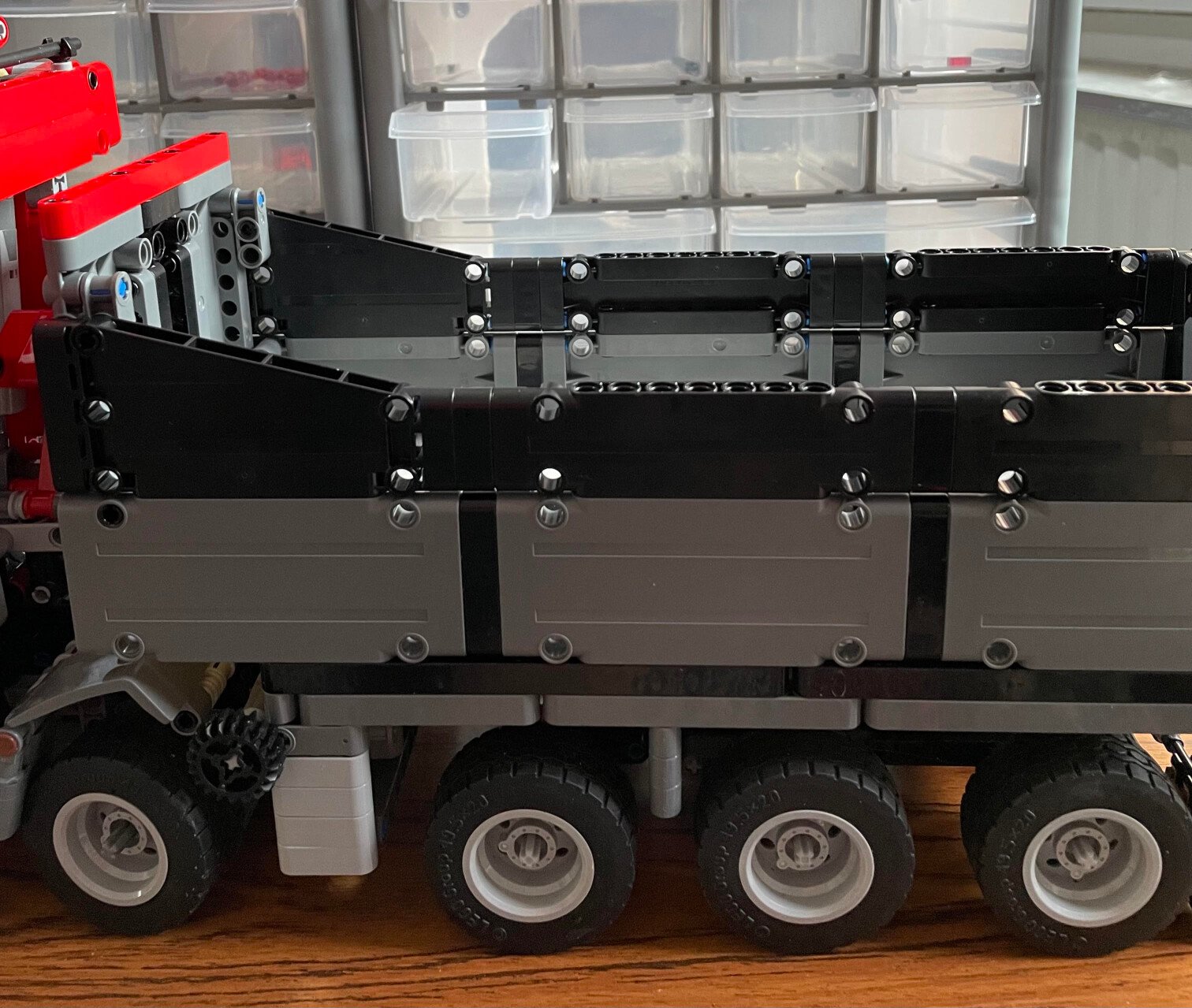
How do you approach your creative process and design ideas?
It’s a difficult question to answer. My ideas generally come from seeing what other designers have created using computer software – something I don’t use myself. While such software generates a ‘render’ of the intended model, my skill lies in looking past the designer’s intended look to see something even better. Often, designers try to keep costs low, which can compromise the model’s structural strength. I dislike weak models and therefore always look for ways to improve both the integrity and the aesthetics – all in my head (though sometimes I make notes). Nearly 99% of my bricks are sourced from Bricklink, a LEGO‐owned website that specialises in breaking down new sets into individual parts or recycling old LEGO parts for reuse. Personally, I only buy used items if new ones aren’t available due to rarity or age.
What has been your most challenging project, and which creation are you most proud of?
The most challenging MOC I ever built was my TARDIS. The original design – created on Studio – was almost childlike in its execution; it lacked the staggered joints that provide strength and featured angles that made the designer’s plans nearly impossible to follow, even as a guide. I had to completely rework the model from top to bottom, incorporating strength into every panel. This meant collaborating with a Studio expert (Jon, a bus driver from Wales) to entirely redo the PDF plans, a process that took weeks. Despite the difficulties, I simply had to have one! In contrast, my proudest MOC is the T65 Berkeley 3-wheeled car I built for a friend. His late father had restored one, and since so few people had ever heard of them, no one had attempted even a small version before. I started from scratch, and the final build exceeded all my expectations.
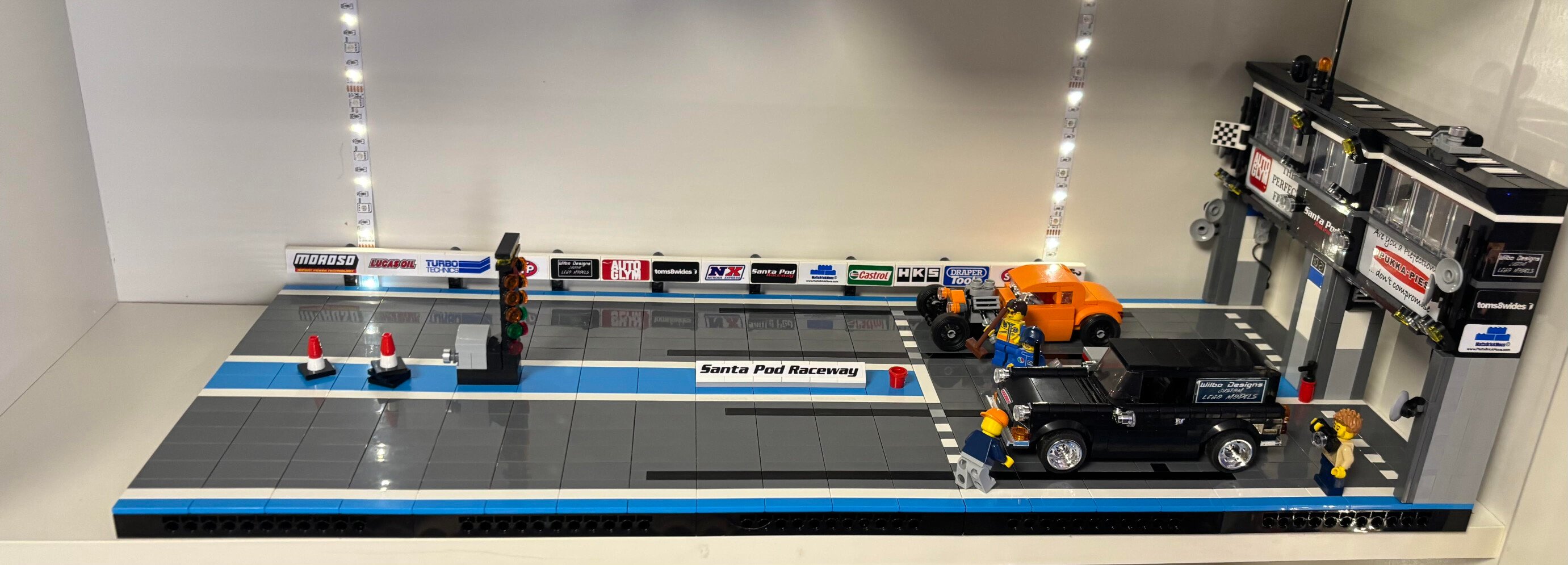
How do you engage with the LEGO MOC community and collaborate with other designers?
I don’t typically use MOC forums because I don’t design using Studio software, and I sometimes feel I wouldn’t be accepted as a ‘designer’ – more of a ‘modifier’, which is perfectly fine with me. Nonetheless, many designers appreciate what I do with their work and are happy to share their files and concepts, knowing that if I build my version of their design, it will be well received and showcase what can be achieved with a bit of imagination and flair. Collaboration is usually a joint effort between me and the original Studio designer. Recently, I embarked on a project that involved working directly with a designer from initial concept through to the finished model – a scale model of the start line of Santa Pod Raceway in the UK. As a huge drag racing fan, I was inspired after visiting Legoland and seeing an outdated, oversized Santa Pod display. I put my ideas to designer Tom Spencer, who brought them to life via a render – a process that took many weeks to perfect. I’m not sure if Tom truly believed I’d actually build it, but I did! It even went viral on Santa Pod’s web feed in February 2025.
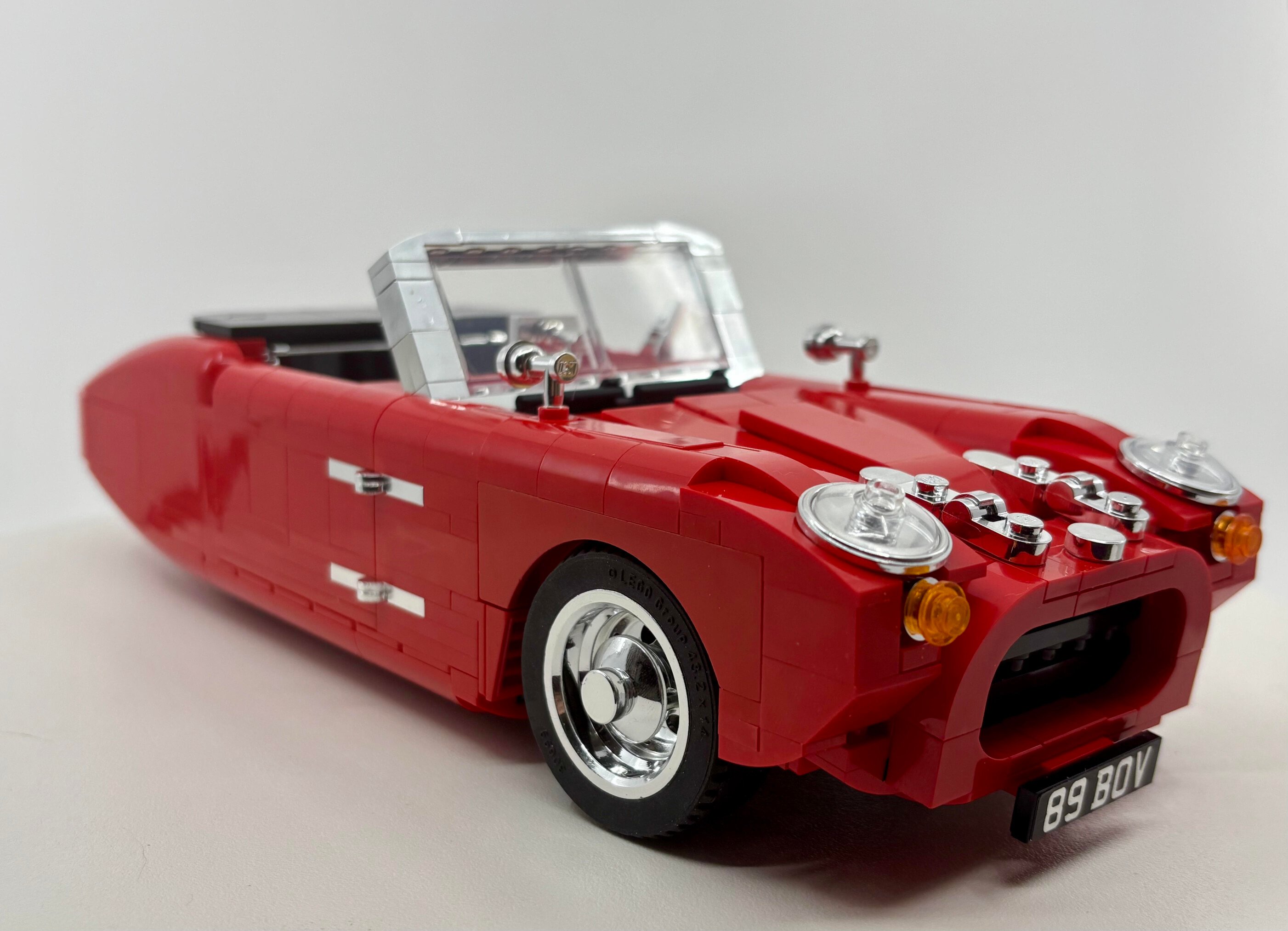
Can you share your building techniques and unique style when creating your models?
My favourite genre is transportation. I’ve been a huge petrolhead all my life, so cars, bikes, planes, etc., are my preferred subjects – especially modified cars like hot rods, customs and even TV/movie cars from shows I remember from days past. The element I most enjoy using is the humble tile, which comes in various shapes and sizes and gives a model a smooth, ‘non-LEGO’ appearance. Many of my followers have remarked that if my model were displayed alongside 100 others, they could immediately recognise it by its smooth, die-cast finish – a technique I’ve been refining since my early build days. Here are two examples of my preferred style: a unique TV/movie car (for which LEGO intends to release a Technic version soon) and a model that I’ve refined with my ‘smoothing stick’ to achieve much smoother, cleaner lines than originally intended.
The Supra from Fast & Furious – 1 of 1
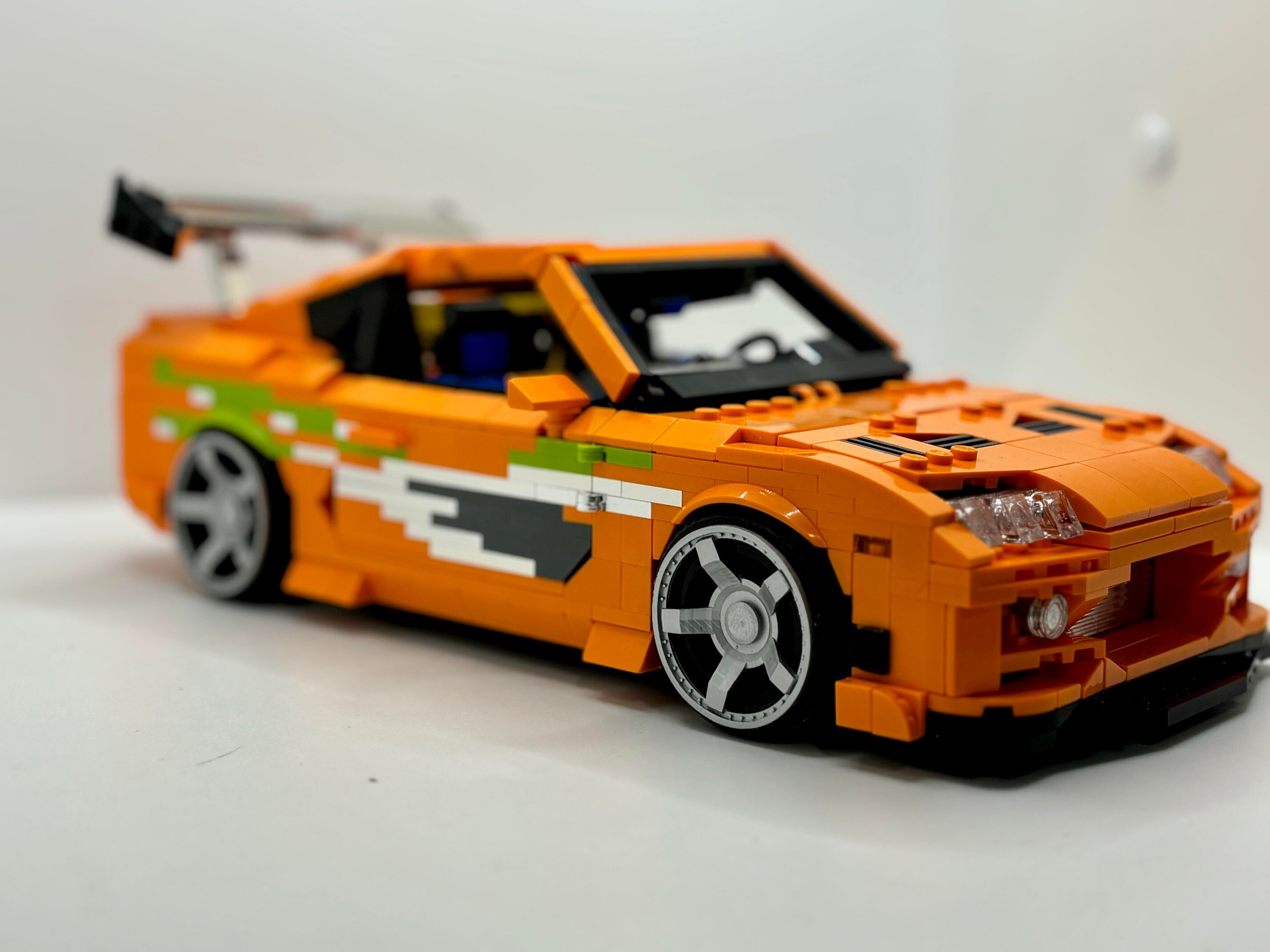
A smoothed out model with hardly any visible studs (based on the original designer’s concept for Mcd Technic).
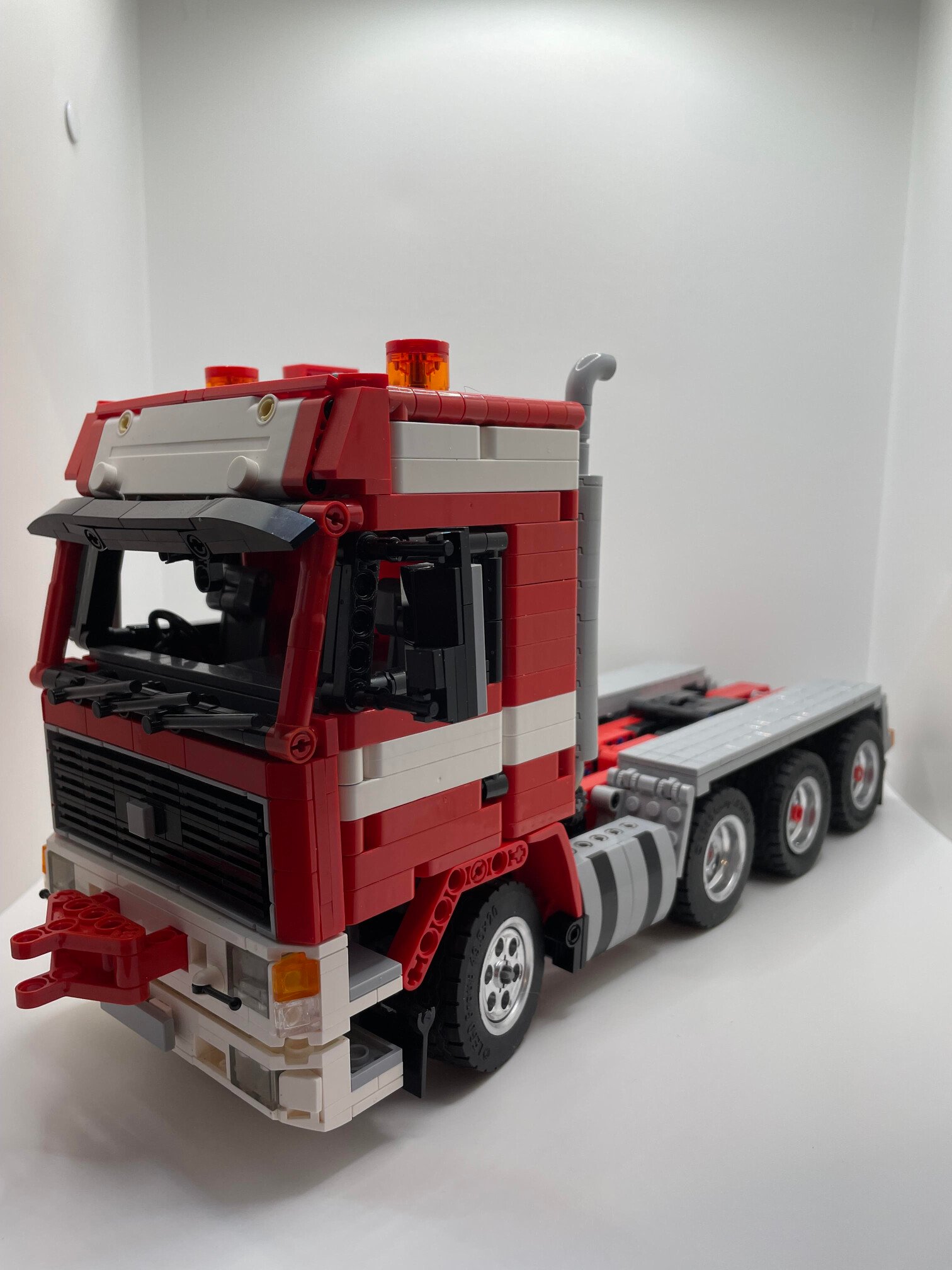
What advice would you give to aspiring MOC builders, and what are your future plans?
My advice to anyone looking to start building MOCs is simple: don’t be scared. However, before committing to buying parts or instructions based solely on a digital render, make sure that someone has actually built the model. Digital design tools like Studio can’t account for gravity or the realities of weak connections. For example, a single stud connection might seem fine in software, but in the real world, at least two studs are needed to support any weight. If a designer hasn’t built their own model, I tend to walk away. Looking ahead, my dream projects include creating more dioramas – projects that paint an entire scene rather than just a single model. There’s even talk that Boxxco might commission me to build the three Minis from The Italian Job for a professionally built diorama to be displayed across the UK, which excites me greatly. I’ve also recently completed the support truck from the TV series Knight Rider, complete with KITT and its sweeping scanning light. Additionally, I’d love to create more replicas of drag cars – I even built a replica of ‘Oklahoma Willy’, a jet-powered VW bus that was showcased globally.
Could you tell us about your experiences with exhibitions and what your builds mean to you?
I’ve participated in many shows and display events across the UK, both in person and virtually. In 2024 alone, the events company NBE commissioned over 30 pieces from me, which toured the country and were seen by tens of thousands of LEGO fans. My work has ranged from a life-size Scooby-Doo to a replica of Springfield – the fictional town from The Simpsons – as well as various cars, planes, trains, and movie characters. Although my health now limits my in-person attendance, I hope to continue collaborating with NBE in 2025 on more exhibits. I love meeting the public and fellow enthusiasts; it makes the whole process worthwhile. There is a growing interest in the story behind a build – the narrative and reasoning that make each project unique – and both NBE and Boxxco have encouraged me to develop this aspect further. If I had an unlimited supply of bricks, my dream build would be an even larger version of Santa Pod, complete with the pits and all the diverse machines found there!

